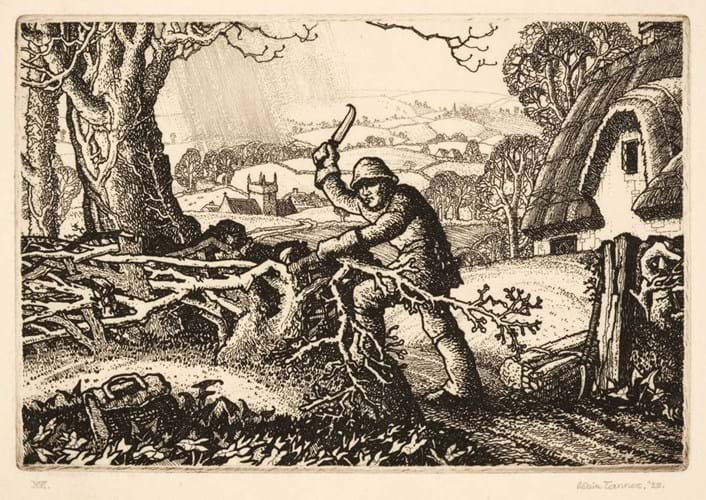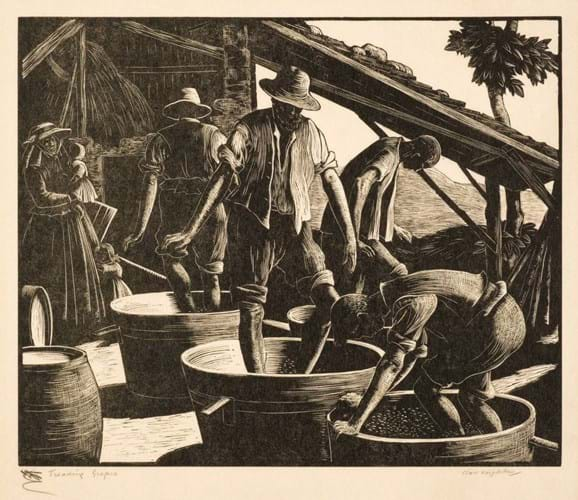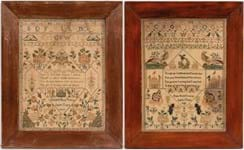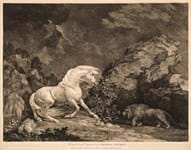One of the lesser-known sides of the late dealer Oliver Hoare (1945-2018) was his interest in print collecting.
Highly regarded for his Islamic art speciality – as an auctioneer he organised London’s first dedicated auction at Christie’s before establishing what would become arguably the most influential dealership in this category – he also quietly gathered a notable group of British prints, both works in modern styles and those in an older pastoral tradition.
Back in October last year, Christie’s sold the Asian art from his estate, along with some antiquities, tapestries and curios, in a 105-lot sale that raised £1.51m including premium. More recently, a group of 70 prints from the Hoare collection came up at Dominic Winter (24% buyer’s premium) in South Cerney.
While not in the same league financially, the prints drew solid interest generally at the Gloucestershire sale on July 23 and a number of works made strong individual prices which were close to, or even above, current retail price levels according to several dealers who attended the sale.
Prints – often classed as the art market’s most tradeable commodities – have been in good health in the midst of the pandemic.
Overall, 56 of the lots sold (80%) for a £45,000 total including premium.
Etcher rediscovered
Among the prominent performers, 11 prints by Robin Tanner (1904-88) brought attention with eight of them selling above top estimate. These included the top lot of the Hoare collection, an etching titled Wiltshire Hedger from 1928.
Tanner, an etcher and draughtsman (and sometime watercolourist) whose works evoked the English romanticism of William Blake and Samuel Palmer, was forced to give up his printmaking career in the early 1930s after the booming market for etchings dropped away in the wake of the Wall Street Crash.
After spending three decades as a school inspector, it was not until he retired in 1964 that he once againtook up etching following a lengthy gap. Although he was ‘rediscovered’ late in life by print dealer Robin Garton, it is his 1920s material that commands the main focus of demand on the market today.
Wiltshire Hedger had a vintage subject for the artist who spent most of his life in north-west Wiltshire and the copy offered at Dominic Winter was a rich impression in the first of its three states. It is thought only 20-30 impressions were made in this first state – it was followed by a second state of 50 prints (published by Nicholson) and further 12 in the third state (published later by Garton & Cooke).
Signed and dated in pencil, the 4 x 6in (10 x 15cm) etching was in generally in good condition despite some traces of inky finger prints at the sheet corners and an area of residual adhesive and old tape on the back.
Estimated at £700-1000, it sold to a private collector in Somerset at £2600 – a record for this print and well over the £720 fetched in the same rooms in October 2015 for a group lot of three Tanner etchings that included a copy of this print which was, seemingly, the last appearance of Wiltshire Hedger at auction.
Rural settings
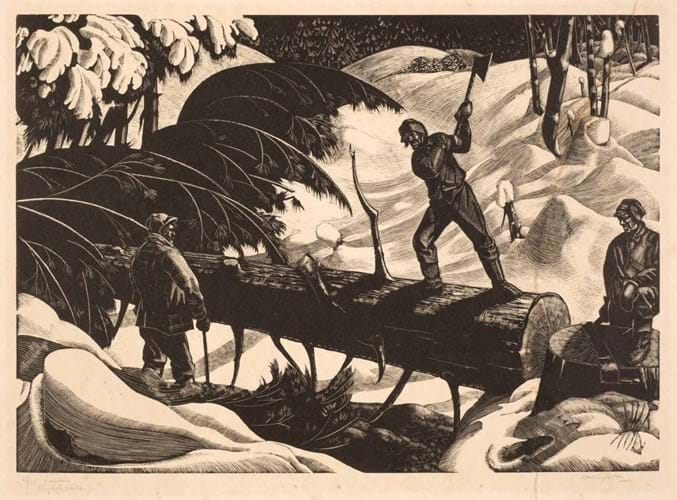
'Limbing', a wood engraving by Clare Leighton that sold along with a copy of 'May: Sheep Shearing' for £1300 at Dominic Winter.
Another artist who tackled similar themes and was well-represented in the Hoare collection was Clare Veronica Hope Leighton (1898-1989). While her highest prices have come for views of New York, pastoral scenes represent her main body of work.
At the Gloucester sale, nine prints were offered as seven different lots – six of which got away for a combined £3780 hammer total. Three lots were bought by a London gallery, two by another London print dealer and two went to private buyers.
One of the lots purchased by the aforementioned gallery comprised two wood engravings: May: Sheep Shearing from 1933 which was created for A Farmer’s Year: A Calendar of English Husbandry, the first book Leighton exclusively wrote, engraved and designed, and Limbing from 1931 which was part of her The Lumber Camp series of six prints. Both typical of her portrayals of working men and women in rural settings, they surpassed a £400-600 estimate and sold at £1300.
The fact that the very same copy of Limbing had sold for £150 at Dominic Winter in June 2017 underlines both the stronger demand for the artist and the boost provided by the Hoare provenance.
While a copy of the book A Farmer’s Year… itself took £800 against a £300-500 estimate, the highest individual sum for a Leighton print came for a copy of Treading Grapes from 1928. The 7½ x 9in (19 x 23cm) wood engraving was a black proof impression aside from the edition of 60 and was signed and titled by the artist.
As well as having been owned by Hoare, it had a fascinating earlier provenance having been among the Leighton prints bequeathed by the artist to Hilaire Belloc. It later appeared in an exhibition of prints from the French writer and historian’s collection at London dealer Abbott and Holder, from where Hoare presumably acquired it.
Offered here with a £300-500 estimate, it sold at £700. With few records of copies of appearing at auction, this appears to be the highest saleroom sum for this print so far.
Landacre engraving
Stylistically different but also making a significant sum for an individual print was a line wood engraving from 1935 by American draughtsman Paul Landacre (1893-1963).
Indecision, a 7½ x 10in (19 x 26cm) image, demonstrated his trademark sparse linear style but it is also something of a rarity, being the only major wood engraving the artist completed without hatching or cross-hatching.
Produced in an edition of 60, it was signed and titled and this impression, which had good strong contrasts, had extra pencil inscriptions in the lower right corner and a red petrel estate stamp.
Estimated at £2000-2500, it sold at £2400 – a sum that appears to be the second highest at auction other than another copy that made $4200 (£3098) at Swann in New York in May 2018.


